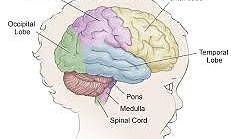What Neuroscientists and Linguists Have to Say ...

The research on language development in early childhood shows that the young brain has an astounding capacity to acquire language. Linguists agree that foreign languages are best taught in the earliest years, and language immersion is the single most effective method for learning and teaching a new language. Scholars have documented increased academic performance in reading, reasoning, and math in elementary students who have acquired dual-language fluency. They even score higher on SATs. Below you’ll find links to research summarized by the ACTFL (American Council on the Teaching of Foreign Languages).

What Does Immersion Look LIke in Practice?
An early childhood immersion program looks just like any other nursery, child care, or preschool program. There's no difference between immersion and what goes on in any child-centered learning environment, except that the caregivers and teachers play with the children, speak to the children, and read to the children in the target language—in our case, Mandarin and Spanish. When you provide 100% immersion to toddlers, they understand the language within a few months, and, by the end of a year, language-ready children are speaking it—not because of any special language training techniques, but because that's the way the early childhood brain works. When they reach kindergarten, children begin learning to read, write, and do arithmetic in two languages, naturally, because teachers instruct them in both languages. By the time they reach high school, they're not just fluent, but literate in two languages. They speak the target language without an accent—a huge advantage in diplomacy, business, and relationships. View our Mila video to watch this young child become fluent in 3 languages over 5 young years.
Impact on Cognitive Development
There has been a revolution in our understanding of children’s minds, brains, and learning capacities. We now recognize that young children know, feel, and learn more than we ever imagined. In laboratories at I-LABS and around the world, children’s natural curiosity and drive to learn is being uncovered in basic research studies. Just as basic research in genetic mechanisms led to the Genome Project, discoveries about the developing mind set the stage for a new science of learning—requiring new policies and programs. Combining interdisciplinary and cross-cultural approaches, I-LABS scientists are on the forefront of these basic discoveries.
Ben-Zeev, S. (1977) hypothesized that mutual interference between a bilingual child’s two languages forces the child to develop particular coping strategies which in some ways accelerate cognitive development. In all groups, parent occupation and education level were similarly high. In spite of lower vocabulary level, bilinguals showed more advanced processing of verbal material, more discriminating perceptual distinctions, more propensity to search for structure in perceptual situations, and more capacity to reorganize their perceptions in response to feedback.
Impact on Overall Academic Performance
- Language learning correlates with higher academic achievement on standardized test measures.
- Language learning is beneficial to both monolingual English and English language learners in bilingual and two-way immersion programs.
- Language learning is beneficial in the development of students’ reading abilities.
- There is evidence that language learners transfer skills from one language to another.
- There is a correlation between second-language learning and increased linguistic awareness.
- There is a correlation between language learning and students’ ability to hypothesize in science.
- Language learning can benefit all students.
- There is a correlation between young children’s second language development and the development of print awareness.
- Heritage learners who use their language skills to interpret and translate for family members experience higher academic performance and greater self-efficacy.
- There is a correlation between language study and higher scores on the SAT and ACT Tests.
- There is a correlation between high school foreign language study and higher academic performance at the college level.
- Language learning provides cognitive benefits to students
- Language learning affects attitudes and beliefs about language learning and about other cultures.

Impact on Future SAT SCORES
SAT scores correlate with years of language study.
Foreign language study and SAT-verbal scores.
Modern Language Journal, 71(4), 381-387. Cooper, T. C. (1987).
SAT scores correlate with years of language study. Foreign language study and SAT-verbal scores. Modern Language Journal, 71(4), 381-387. Cooper, T. C. (1987). Comparison of verbal Scholastic Aptitude Test (SAT) and California Achievement Test (CAT) scores of high school students who had or had not taken at least one year of foreign language study supported the conclusion that length of foreign language study was positively related to high SAT verbal scores. Eddy, P. A. (1981). The effect of foreign language study in high school on verbal ability as measured by the scholastic aptitude test-verbal. Final report. U.S.; District of Columbia, from ERIC database. Students in the eleventh grade in three Montgomery County, Maryland, high schools were the subjects of a study to determine the effect of foreign language study on performance on the verbal section of the Scholastic Aptitude Test (SAT). The following results were reported: (1) when verbal ability is controlled, students who study foreign language for longer periods of time will do better on various SAT sub-tests and on the SAT-Verbal as a whole than students who have studied less foreign language; (2) having studied two foreign languages has no significant effect on SAT scores or on scores on the Test of Academic Progress (TAP); (3) language studied has no differential effect on SAT or TAP scores; and (4) there is some evidence that higher grades in foreign language study will increase the effect of this study on SAT scores (particularly the reading and vocabulary sub-scores). In conclusion, it appears that the effect of foreign language study makes itself felt more in the area of vocabulary development than it does in that of English structure use.
Resiliency & Executive Function
Member






